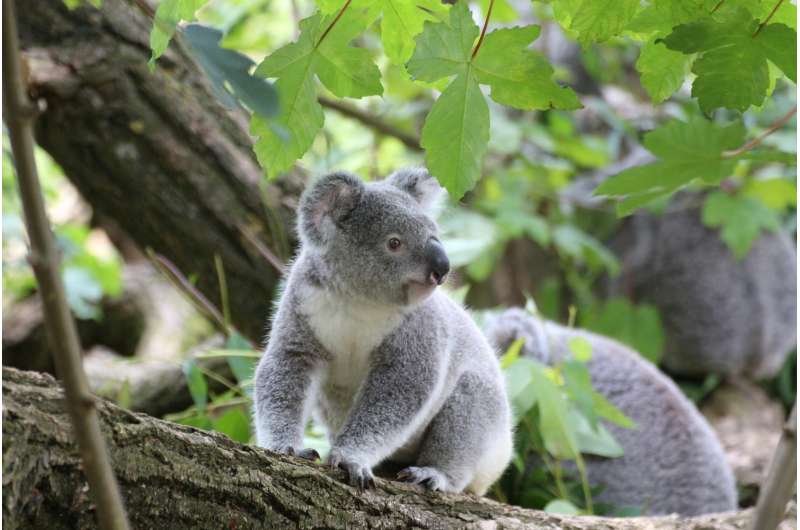A virus is attacking koalas' genes—but their DNA is fighting back

A virus that infects koalas is steadily integrating itself into their DNA, ensuring that it is passed down from generation to generation. But the koala genome is defending itself, revealing that DNA has its own immune system to shut down invaders.
The virus, called koala retrovirus (KoRV), is linked to weakened immunity, cancer, and chlamydia infection in koalas. All retroviruses hijack the DNA in some cells of their host's body, but not all of them manage to be transmitted to the host's offspring.
Your DNA is 8% virus
Over the millions of years of evolutionary history, retroviruses have at one time or another made their way into the genomes of all species of vertebrates that we have studied.
We know about these ancient infections because retroviruses sometimes infect the animal's sperm or egg cells, which means the virus incorporates its own DNA sequences into the genome that is passed from generation to generation.
These viral sequences can contribute to disease, but have also been "co-opted" by the host animals for processes that are essential to normal development. As much as 8% of the human genome is made up of the remnants of infectious viruses.
While we know that retroviruses have frequently appeared during evolutionary history, we don't know much about how retroviral sequences infiltrate sperm and egg cells, or how these cells react.
Catching a retrovirus in the act
Almost all known retrovirus genome invasions happened millions of years ago. However, KoRV is a recently identified exception. The virus spreads between individuals, but is also infecting sperm and egg cells, so many koalas are born with this pathogen as part of their genome.
My colleagues and I at the University of Queensland are collaborating with scientists from the University of Massachusetts Medical School to analyse how koala sperm and egg cells respond to KoRV-A infection.
Our findings, published today in Cell, suggest these cells mount a novel "innate genome immune response" to viral infection, which may help control the spread of infectious KoRV.
Within this project, the team analysed DNA and RNA from different tissue samples from deceased wild koalas from South East Queensland. (Like DNA, RNA also contains genetic information about the koalas—but it is also what KoRV's own genome is made of.)
The team specifically looked for short sequences of RNA, between 23 and 35 nucleotides long, known as PIWI Interacting RNAs (piRNAs). Clusters of piRNA sequences are retained within the genome and serve as a kind of memory bank of undesirable sequences—signatures of invading viruses—to be targeted.
An immune system for the genome
Based on our new findings, we suggest that there is a specialised immune system to defend against retroviral genome invasion. Like the ordinary immune system, this one includes an innate response—a sort of general-purpose defence against attackers—and an adaptive response, which learns to recognise specific pathogens and take them down.
At the early stages of egg or sperm infection, the altered DNA sequence results in a "molecular pattern" that is recognised by an innate genome immune system, which stops the activity of the virus and starts producing signature piRNA sequences to recognise the invader.
The innate immune response works until a memory of the genome invader is created and a sequence-specific adaptive response kicks in.
We propose a framework through which a sequence from an invading retrovirus can first have its genes "silenced", and then through targeted processes it eventually becomes an integral part of the host genome.
This "genome immune system" changes our understanding of what shapes the genomes of all animals. No more can we view the genome as a defenceless entity governed purely by natural selection—it fights back.
Provided by The Conversation
This article is republished from The Conversation under a Creative Commons license. Read the original article.![]()





















